The effects of rainwater, tap water, and groundwater on cannabis
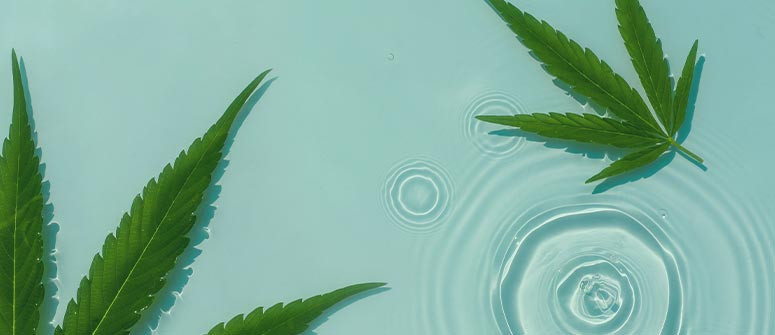
Not all water is created equal, and some sources might be perfect for growing weed while others might be quite damaging. Here we look at what cannabis needs from water, and investigate four potential water sources for cultivating cannabis plants.
Contents:
Water quality is one of the most important factors when it comes to growing cannabis. Though it might seem obvious, it can be easy to take water for granted.
In this article, we look at four different water sources—from tap water through to expensive purified water—and assess their viability for growing cannabis. There are a lot of options out there, and choosing one depends on what you have available and what you hope to achieve!
Why is water choice important for growing cannabis?
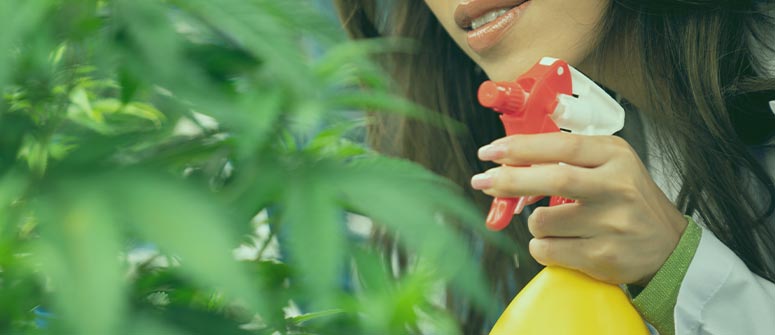
Cannabis needs many things in order to survive, and water is one of the most essential. It can be easy to assume that all water is the same and anything will do, but this is far from the truth.
Different water sources can have a large impact on the overall health and development of your cannabis plants, ultimately affecting the size and quality of your final yield. In some cases, local tap water might suffice. In others, you may want something much purer.
Therefore, choosing an appropriate type of water for your grow is well worth considering before you begin, as many other factors will be affected by it.
What does cannabis need from water?
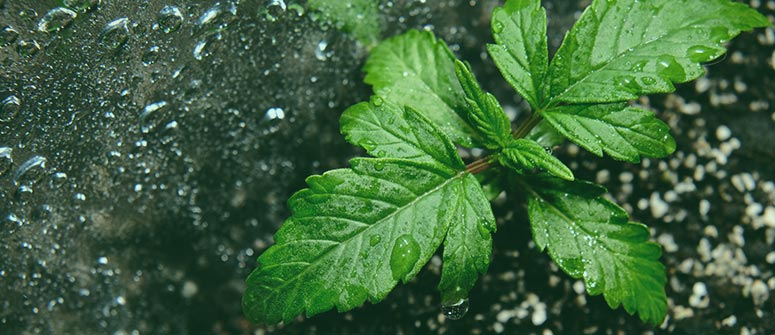
Water doesn’t just hydrate cannabis, but is the medium through which the roots absorb nutrients and contaminants alike. Moreover, cannabis requires a specific pH level in order to properly absorb its food, and if the media deviates from this, then you’ll encounter issues such as nutrient lockout.
Most water sources have some mineral content, meaning they already contain nutrients (which can be good or bad), and all water has a pH level, often higher than what you want in your growing media. For soil grows, a pH of 6.0 to 7.0 will support optimal functioning. In a hydro setup, 5.5–6.5 is appropriate.
Regarding nutrients, there’s a “goldilocks zone” for feeding weed. Too little, and plants struggle to grow properly; too much, and they experience nutrient burn or nutrient lockout. The biggest danger that nutrient-rich water poses is that you may end up overfeeding your plants, which can seriously damage them. Therefore, whichever water source you choose, it’s important to be aware of both its pH level and nutrient content.
How to test water for growing cannabis
Fortunately, devices exist that allow us to test water and figure out what’s going on within.
Regarding pH, we need a pH meter—a handy tool used to test the pH level of your water. If the reading is a little off, this needn’t be cause for despair. You can either opt for a different water source or employ a pH up/down solution to correct it.
In terms of ascertaining the nutrient content of your water, you can use either a TDS meter or an EC meter. A TDS meter measures ppm, which stands for “parts per million”, and tells you how much of your water is composed of nutrients. As a rough guide, cannabis likes the following ppm:
- 500ppm for the seedling stage
- 800ppm for the vegetative stage
- 1100ppm for the flowering stage
Don’t worry if your water scores way under this, as you can supplement it with feed. If your water already has a high ppm, however, you may run into issues, and might have to consider another source.
Alternatively, an EC meter measures electrical conductivity. The greater the conductivity, the higher the nutrient content. Roughly, cannabis likes the following measures:
- 1–1.3 for the seedling stage
- 1.7–1.8 for the vegetative stage
- 2.1–2.2 for the flowering stage
Once again, if your sample exhibits levels above these ranges, you may have to consider a different water source.
The different types of water for cannabis
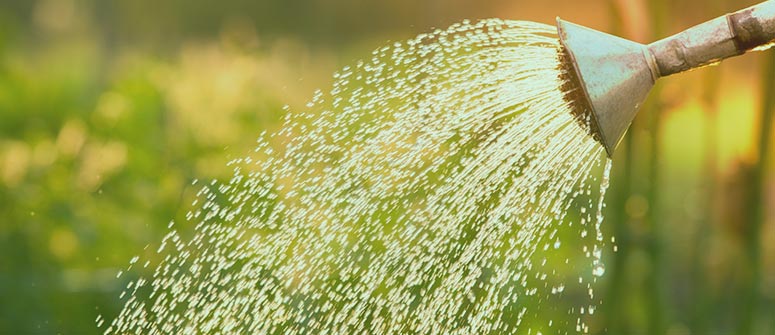
Now that we know a little about what cannabis needs from water, we can look at the different types of water available for growing cannabis.
Tap water
Perhaps the most accessible source of water is tap water. If your local tap water is sufficient for growing cannabis, your entire grow-op is off to a good start. There are obvious benefits to using tap water to grow weed, but there are some drawbacks too.
Tap water varies massively in quality. It collects minerals from the local landscape, and quality depends, in part, on whether you live in an urban or rural environment.
Some tap water may be quite acidic and have little mineral content (great for growing weed), whereas another source might be full of limescale and be pretty alkaline (less good). Moreover, water in cities tends to be reused up to seven times, and the ppm count increases each time, making it less suitable compared to rural water.
No matter where you are, test your tap water before using it so you understand what it offers.
Pros
- Simple and easy
- Accessible
- Often fairly cheap
- Makes setting up automatic watering systems fairly easy
Cons
- Depending on where you live, it may be unsuitable
- Though cheap, there are cheaper options
Rainwater
Alternatively, you could use rainwater. On the whole, rainwater is fairly pure and has a neutral pH. That being said, pollution in the air can make its way into rain, meaning that it may not be as pure as you might hope. Once again, test before using.
In order to use rainwater, you’ll have to collect it first. Rainwater collection can range from a simple and inexpensive water butt in your garden to something significantly more complex. Obviously, collecting rainwater is much easier if you have a space outdoors and somewhere with a lot of rain.
It is possible to collect rainwater from your roof as well, but this has numerous considerations that may make it less attractive. Plus, this is illegal in some places, so do your research first!
Pros
- Potentially cheap setup, and then free from there
- Rainwater can be very pure and suitable for plants
- Very easy if running outdoor cannabis cultivation sites
Cons
- Difficult for those without a garden/outdoor space
- Can get quite expensive
- Can be illegal
Groundwater
Depending on where you live, groundwater might be an option too. Maybe you have a river running through your garden, or perhaps you even have a well. These provide an obvious source of water to use for growing cannabis plants.
But groundwater is about as varied as a water source can get, and you need to test it before you use it. Some will be perfect; some will be dreadful. You have to look at where it comes from, what sort of ground it runs through, what else runs into it (farm runoff, for instance), and much more.
More than any other source, groundwater has the potential to be highly contaminated. But if it’s not, then it can be fantastic.
Pros
- Free, if it’s available
- Convenient, if it’s available
Cons
- Can be highly contaminated
- There might not be any groundwater near you
What About Pure Water?
If you’re feeling really fancy, you can even treat your cannabis plants to pure water or distilled water. There is one huge advantage to pure water: it doesn’t contain any nutrients and has a neutral pH. As a consequence, you know exactly what you’re working with. It makes feeding particularly easy, as the only nutrients your plants receive are those you feed it.
In a soil grow, pure water is probably an unnecessary luxury; but for a hydroponic grow, it can be really useful, as accurate pH and ppm is very important in this case.
To source pure water, you can either buy it bottled and ready, or instal a reverse osmosis system in your home. Both are expensive, but effective.
If you don’t need truly pure water, then you could use standard bottled water made for human consumption or filtered water, which, although not totally pure, is much closer.
Pros
- You know exactly what you’re getting
- Perfect for hydroponics
Cons
- Can be very expensive
- Might be overkill
- Bottled water is bad for the environment
Which type of water is the best for growing cannabis?
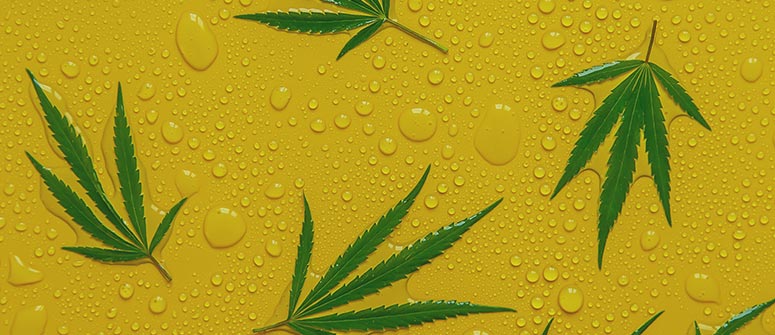
The answer to this question depends on what you have available, and what end result you want. For instance, if you’re embarking on your first, casual cannabis cultivation experiment and your tap water is pretty good, then stick with this. It doesn’t need to be perfect!
On the other hand, if you’re an experienced cannabis cultivator running a hydroponic grow for the best possible results, then maybe a reverse osmosis system is a worthy investment.
In many cases, tap water, with a little treatment, will suffice. Remember, weed is a tough plant that can grow just about anywhere.




